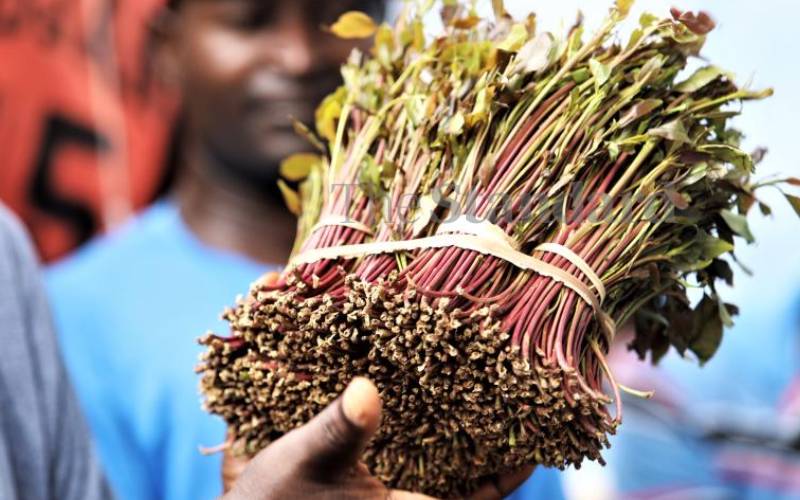he Ministry of Agriculture has developed a new handbook that will guide farmers on miraa husbandry and handling.
The miraa production handbook, unveiled by Agriculture Cabinet Secretary Peter Munya in Meru, is an initiative by the ministry to improve the miraa value chain and boost growth of the sector.
“This handbook, although focusing on production, is a vital component of the wider government initiatives on the improvement of the way the crop is produced, traded and consumed,” said Munya.
Head of the Agriculture and Food Authority’s (AFA) Directorate of Miraa, Pyrethrum and other Industrial Crops, James Mutia, said development of the manual will provide guidelines on how miraa farming needs to be carried out, to ensure quality is achieved.
“This in turn will promote its marketability in and outside of Kenya,” said Mutia, adding that emphasis had been laid on best practices to ensure quality of the crop is improved.
“In the past, miraa growers have relied on indigenous knowledge despite the crop being a multi-billion shilling industry,” he said.
Mutia urged farmers to use the book for guidance, but also seek expert opinion from agriculture offices in their localities.
The book recommends that the ideal site for a miraa farm is in well-drained fertile soil and a flat to gentle slope. Miraa fields are usually prepared during the dry season before the rains start.
Adequate water supply should be available all year round, including by irrigation. It recommends that a miraa farm should be easily accessible and free from hostile weather.
While farmers space their miraa plants differently, the handbook recommends a spacing of two meters by two meters in the lowlands (sorghum-cotton zone), and three meters by three meters in uplands (the coffee zone).
According to the handbook, miraa can be intercropped with beans as a cover crop, as it would benefit from nitrogen fixed by the beans.
“This relationship also reduces loss of water from the soil surface, and provides income to farmers before the crop reaches harvesting maturity,” the book reads.


